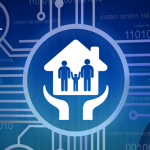
The COVID-19 crisis has brought with it extreme levels of uncertainty and has created a situation that is well beyond the experience of most of the enterprises. Companies are likely to experience a disruption in their operations as employees are forced to work remotely. They may have to deal with short-staffing and low visibility of workflows. Additionally, they require rethinking how to interact with the potential customers, address their changing demands, and prepare for recovery.
As most businesses choose not to reinvest, B2B organizations need an agile shift in engagement and communication channels. The need of the hour is business continuity and disaster recovery plans which will help wade through the challenges. In this primer, we outline a few thoughts on how businesses can improve their early response to the pandemic. From the trends, it is clear that they need to build on resilience and prepare well-in-advance to pull through the tumultuous times.
Ways to cope
Right at the onset, organizations need to accept that it is not business as usual. It is of utmost importance to prioritize what needs to be done immediately for survival in the long run. It is critical to focus on the well-being of employees, ensure their mental health during self-isolation, and give them a sense of belonging while keeping the team momentum going. It works best for businesses in these times to put the health and safety of the employees first.
They also need to determine how the crisis will affect their budgets, and if former assumptions no longer remain relevant, they should focus on being agile to bring in necessary changes in financial plans. They will have to find out whether the existing business model is resilient enough to reduce both short-term and long-term costs and help in recovery. They may require new models, which assess the potential risks of the crisis and define effective responses.
Importantly business continuity planning (BCP) requires serious attention from senior leaders. While pandemics are inevitable, investing rightly with immediate effect may have a positive impact on the ability to recover. Any strategic business plan crafted previously for this year may not prove effective. 2020 will be a year of regrouping and survival. Not only will it come with new ways of working and fresh responsibilities, but it will also bring in a new management paradigm.
While existing business continuity plans are reviewed, this crisis is a wake-up call for those organizations which have mainly focused on daily operational needs without investing in long-term strategies. At this hour, a shift of technology capacity to digital platforms will help mitigate the adverse impact of the outbreak to an extent. By “digital platforms” we refer to more pervasive, technology-enabled business models that facilitate necessary exchanges between interdependent groups, either two or more. They bring together the end-users and producers, enabling and empowering them to transact with each other.
For seamless operations
Besides, the above organizations need to focus on operational continuity. Two key areas where CTOs/CIOs can increase access and capabilities are –
- Digital workplace resources and
- Digital technology to address changing customer behavior
The capabilities of the digital workforce can be increased by identifying their workflows, clearly identifying who can work remotely, the tasks they can accomplish, and the systems they will need access to. If required, the technology capabilities will have to be scaled which may involve empowering the workforce with messaging, collaboration and video conferencing tools, and ascertaining the security need to safeguard business data.
For the second aspect, organizations need to look at increasing the capacity for digital sales and self -service while ensuring personalized remote experiences to ensure a positive experience for customers in unfamiliar contexts. Immediately introducing smartphone apps and chatbots will help solve queries and allow the customer service reps to handle more complex issues. New opportunities that emerge in these times can be embraced to create relevant products, not forgetting that agile practices will enable seamless shifting of the necessary digital and physical resources.
Looking at strong leadership
In these unprecedented times, good leadership can act as a silver lining to a business.
Leaders can consider reducing the full-time work to eighty percent, allowing the employees to come to terms with the crisis. They can consider getting creative together and adopting a clear, empathetic, honest approach to communication until the situation evolves. They can also consider capturing success stories of team members overcoming the adversity and continuing to perform unhindered. These stories can be shared for circulation with the human resource team, which in turn will motivate rest of the workforce.
For a sustainable future
Your response today will determine your future tomorrow. A crisis-agnostic plan is what you need. It may involve exploring the different scenarios and how they may affect the business, adopting a well-thought-out agile working program, creating a dedicated team for crisis-management and training them to act on a war footing when required, crafting a strong stakeholder communication strategy, and lastly ensuring collaboration both internally and externally.
While the response window for most businesses affected will last for a few months, we can measure recovery can only in years. Hence, it’s time to take quick action and adopt a long-term perspective which will enable a company to emerge from this crisis stronger and move towards sustainability.














